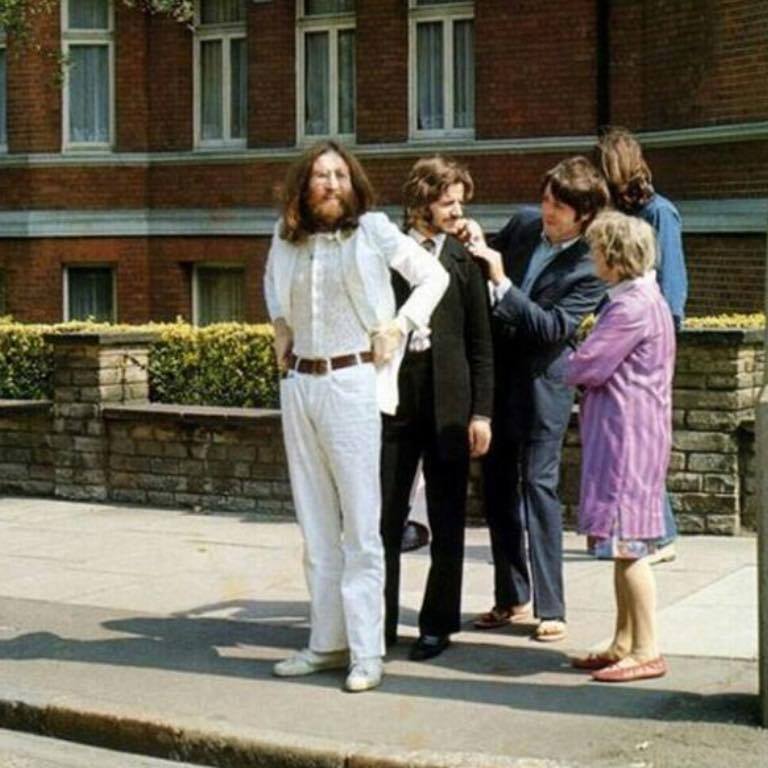What do you see in this picture, taken half a century ago this month?

Some will just see four guys and a lady standing on the curb. Not a very compelling picture, wouldn’t you say, with most of the faces barely visible.
Others will recognize those four lads as the Beatles, but don’t realize the photo’s significance without context.
A few will see this picture for what it really is – a rare shot of The Beatles taken just moments before the photo that was to become one of the most famous album covers in history – Abbey Road, the last album the Beatles recorded.
Well now, how I am going to turn THIS into a Frost Advisory?
In a recent visit to a radio station I began the strategic planning process with this nifty idea:
For people to see things in the same way, it is helpful for them to be standing in the same place looking in the same direction at the same thing.
It’s been said that we only value what we love. We only love what we understand. We only understand what we are taught.
In Christian radio I’ve noticed three distinct backgrounds that form the perspective on whether certain principles are understood and valued.
Those with a ministry background often tend to perceive programming principles through a filter of church work. Often the spoken word, gathering people together, and tangible activities that impact in the community resonate most with them. They can tend to undervalue the power of music to connect emotionally and cut through denominational and theological barriers. Music can be viewed as “filler” between the REAL ministry stuff. I even hear the phrase “music and ministry” as if music isn’t.
Some with a ministry background easily default that a radio station should be run like a church while conversely understanding that it would be a really bad idea to run a church like a radio station.
Those with a sales or business background often view programming as a linear process: a list of tasks, if you will. If you do A then B will happen. They can undervalue the art of programming – the power of emotion, how the station makes people feel, or the art of story-telling. Logic dictates that if we paint by the numbers we’ll end up with the Mona Lisa.
Those from a secular radio background can tend to view programming a Christian music radio station as an exercise of efficiency. Shut up and play the hits. They tend to evaluate content with a stop watch rather than an emotional barometer.
They view the “faith” component suspiciously and often confine it to only the music, treating it like Brussel sprouts as a side dish to a really fine steak, preferring not to have it at all. They place a high priority on science – music rotations, playing the PPM game of “bow ties” and fewer interruptions. To heck with station branding! (Confession! This could have easily been me had I not run into some really smart people along the way who nudged me to better thinking).
None of these perspectives is necessarily wrong, in and of itself, just incomplete and one dimensional. It’s like looking at the picture of the Beatles from August 1969 and not understanding the context of what makes it significant.
Art and science. Laughter and tears. Technical efficiency. Relevant and meaningful ministry initiatives. Impacting lives and telling those stories.
Each is important in the success of your programming, but without understanding the big picture our default is inevitably what is in our own rear view mirror.
My brilliant friend Joe Battaglia says, “You always go back to the trough from which you’ve been fed.”
Or, in the words of the Fab Four, how we get back to where we once belonged.
